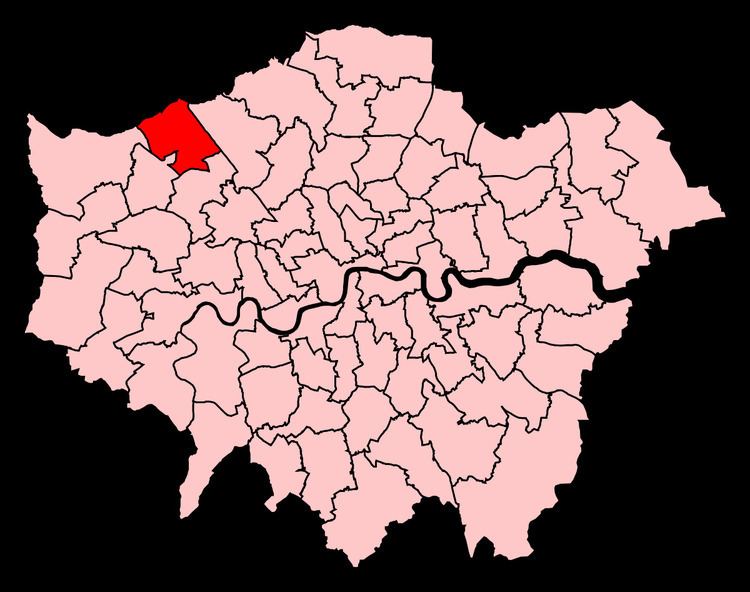County Greater London Created 1945 Member of parliament Bob Blackman | Electorate 72,537 (December 2010) European Parliament constituency London Number of members 1 | |
 | ||
Created from Hendon & Harrow (parts of) Major settlements Stan, Kenton, Queensbury, London, Wealdstone, Harrow Weald | ||
Harrow East is a constituency in the London Borough of Harrow created in 1945 represented in the House of Commons of the UK Parliament since 2010 by Bob Blackman, a Conservative.
Contents
History and profile
The seat was created in 1945 and has been varied due to two sets of major ward reconfigurations and by other national boundary reforms. The predecessor seats were Hendon and to a much lesser extent Harrow. The censuses of 2001 and 2011 show the overwhelmingly most common housing types of the seat to be semi-detached houses, almost a majority, followed by mid-rise apartments whether purpose-built or converted from older houses, then terraced and then detached houses, and consistently lower-than-average proportions of social housing for Greater London. The seat is served by three separate commuter lines running into Central London and has many parks and sports grounds. Few arterial roads bisect Harrow East — further east is the start of the M1 motorway and in the middle of seats further south in north-west London are the A40 Western Avenue and North Circular Road, omitting the boundaries drawn from the arterial road-building projects of the 1940s to 1970s.
To date since 1945 a stronger area for the Labour Party than neighbouring Harrow West, the seat has been mostly Conservative in outcome. Labour did win here in landslide victories in 1945, 1966 and 1997, and held on in the two subsequent general elections. In 2010 the seat was regained by a Conservative on a high turnout, though Labour's incumbent managed to hold on to Harrow West. Residents in the borough include fewer people in the category of no qualifications than the national average, in 2011, at 16.8%.
The seat has been a bellwether since the 1979 General Election (inclusive), by reflecting the result nationally. The 2015 result gave the seat the 53rd most marginal majority of the Conservative Party's 331 seats by percentage of majority.
Boundaries
1945-1950: The Urban District of Harrow wards of Kenton, Stanmore North, Stanmore South, Wealdstone North, Wealdstone South, and part of Harrow Weald ward.
1950-1955: As above less Wealdstone North and Wealdstone South
1955-1974: The Municipal Borough of Harrow wards of Belmont, Harrow Weald, Queensbury, Stanmore North, and Stanmore South.
1974-1983: The London Borough of Harrow wards of Belmont, Harrow Weald, Queensbury, Stanmore North, and Stanmore South.
1983-2010: The London Borough of Harrow wards of Canons, Centenary, Greenhill, Harrow Weald, Kenton East, Kenton West, Marlborough, Stanmore Park, Stanmore South, Wealdstone, and Wemborough.
2010–present: The London Borough of Harrow wards of Belmont, Canons, Harrow Weald, Kenton East, Kenton West, Queensbury, Stanmore Park, and Wealdstone.
